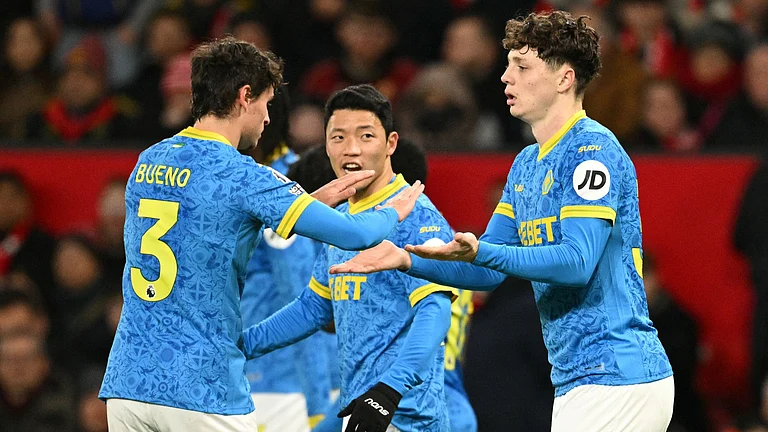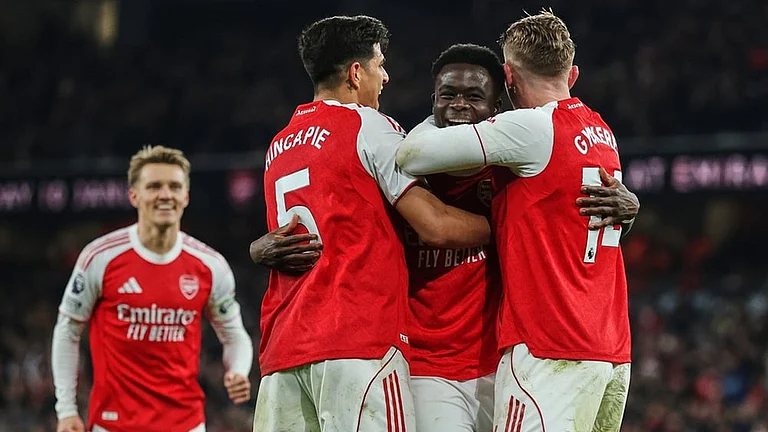Andimuthu Raja’s troubles never seem to end. Just when the heat and dust over the tapes of his alleged conversations with lobbyist Niira Radia—which reaffirm favouritism towards new telecom licencees in ’08—appears to be settling down, a new initiative by telecom regulator TRAI threatens to re-ignite the spectrum scam. On May 11, TRAI dropped a bombshell, recommending that existing operators pay 3G market price for 2G spectrum held by them in excess of 6.2 MHz.
Though it’s early days yet, the revenue implications are significant. According to TRAI, the government stands to gain Rs 30,000 crore. As it celebrates the record revenues from the 3G-spectrum auction, the government is also sending out a strong signal that it seeks to (and needs to) make amends for the losses it suffered by distributing licences bundled with start-up spectrum at a piffling Rs 1,651 crore in 2008.
The TRAI proposal is expected to hit the bigger telcos—Airtel, Vodafone, Idea and BSNL—as they hold spectrum well in excess of 6.2 MHz. Airtel, for instance, holds 10 MHz in Delhi, which means it will have to pay market rates for the excess 3.8 MHz for the next four years or till its original licence expires. TRAI also tightened the prescription by stating that for spectrum beyond 8MHz, companies would have to pay 1.3 times the 3G rates. With 3G-spectrum rates already crossing limits, a huge impact on existing companies is inevitable.
Not surprisingly, the telcos have declared war on TRAI, even threatening legal action. First off the block was Airtel, calling the proposals “shocking, arbitrary and retrograde”. In a letter to Raja, Vodafone Essar pointed out that linking of 2G spectrum to 3G prices was unjustified. Experts, too, find flaws in TRAI’s approach. “Spectrum prices have to be found through market mechanism, but linking 2G spectrum to 3G-spectrum price is debatable, because the price discovery of 3G spectrum auction is driven not by a business case but a spectrum crunch,” argues Arpita Pal Agarwal, executive director, KPMG.
Be that as it may, more than the companies, it’s Raja who will be in a tight spot over the TRAI recommendation. The 3G-spectrum auction has proven beyond doubt that the policy and price followed in 2008 was designed to favour a few companies. In other words, the price arrived at in 3G auctions are many times higher than those in 2008. The total booty from the 3G auctions that ended last week is close to Rs 68,000 crore. Whereas, in 2008, the government got just around Rs 9,000 crore. This discrepancy is likely push agencies like the CBI and CVC, who are investigating the charges against the minister, and thereby increase the pressure on him.
In any case, Raja has been twiddling his thumbs over the past year. Most of the crucial decisions pertaining to his ministry have been dictated by the pmo and the finance ministry, including the 3G-spectrum auction process, where the EGOM headed by the Union finance minister Pranab Mukherjee stepped in. Recent media reports of tapes of Raja’s conversations have not helped his case. He has been able to stay on solely because of a delicate political equation that the Congress shares with his party, the DMK, within the UPA combine (see box).
The TRAI’s latest recommendations will further make matters difficult for Raja. Whichever way he reacts, opponents are going to gun for him. If Raja stays quiet and supports TRAI in its present crusade, he will be going against a policy of spectrum allocation—based on a subscriber-linked system—followed by his ministry over the past few years. That’s a double-edged sword. While the new telecom players like Uninor and Swan, as well as CDMA operators like Reliance and Tata, who have come into GSM, are safe for now, the new TRAI rules could hurt them when they go for additional spectrum allocation.
If Raja opposes the recommendations, he will be seen as causing a further loss of revenue for the government and provide fodder for political hounds. With limited options, Raja will probably play along or just delay matters to buy time. But like before, there will be a face-saving formula. Mukherjee has indicated that the EGOM, which eased the process of 3G-spectrum auctions, will examine the issue and take the final call.
The Department of Telecommunications (DoT) is learnt to be critical of TRAI’s call and may look at an alternative route. So in all probability, the regulator will be asked to water down the proposals so that everyone goes home happy—and litigation is staved off. This might give telcos temporary reprieve to recoup from the 3G-price shocks. But with the government tasting blood in the 3G auctions, the play of market forces on spectrum pricing across technologies is inevitable—whether the powerful telecom lobby likes it or not.
And Raja? With his wings clipped and ministerial control taken away, the recent events will place him in an untenable position. There’s only one way out.






















